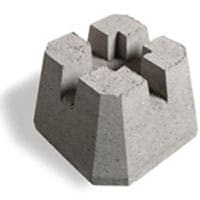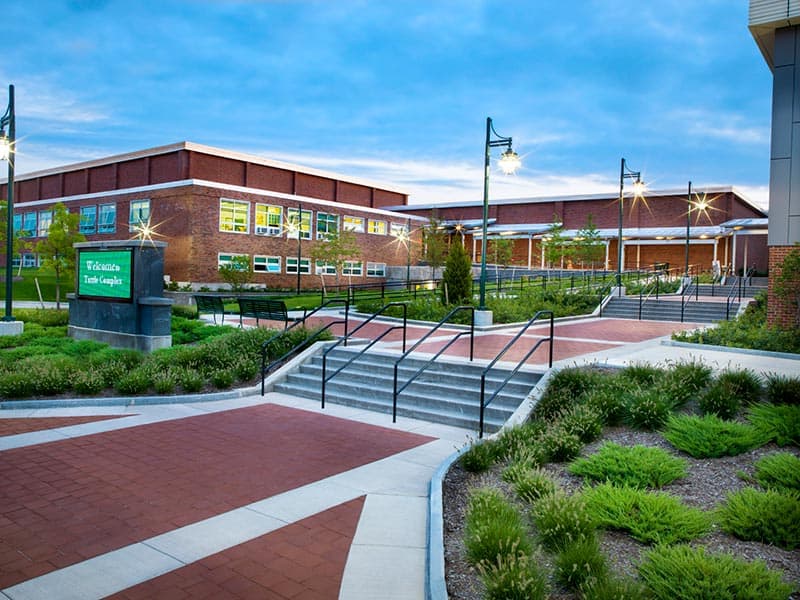The Envelope Corner: Frost Heave and Frost Depth
by James D’Aloisio | July 2025
CNY has just endured a harsh winter with extended periods of below-freezing temperatures. Frost penetrated the ground deeper than it has in recent years, resulting in frost heave failures of decks, garages, and other structures. So how deep should foundations extend to avoid frost heave problems?
Most engineers in CNY say 4 feet. However, in some cases this is slightly excessive, and in other cases, not adequate. The best reference we at KHH have found is the US Military’s Unified Facilities Criteria (UFC) design standard. According to this standard, in Syracuse, NY:
| Maximum Frost Penetration (e.g., for a flagpole): | 6’-1” |
| Design bottom of footing depth for an unheated building: | 4’-8” |
| Design bottom of footing depth for a heated building: | 3’-6” |
In recent years we have noted increased usage of masonry blocks designed to support a wood post right on grade with no depth of cover. These foundations are sometimes called “post blocks” or “deck blocks” (see Figure 1). They might be acceptable for use with a deck that has no utilities, assuming the owner is willing to accept seasonal movement—meaning, usually when the ground thaws, the structure settles back to its original position. However, if these blocks support the posts of a deck that has other supports with frost cover (i.e., a deck connected to the wall of a house), severe structural damage can result as part of the deck heaves while part stays in place.
There are downsides to extending deeper than what is necessary for bearing and to avoid frost heave. We studied how locating footings 1 foot deeper than necessary could affect material quantities. See Figure 2.
Figure 2 – Footing depth (by Nada Elturk) 
What we found is that an additional foot of unnecessary footing bearing depth results in around 30 percent more material, labor, carbon emissions, and cost. These findings confirm that the deeper the foundation bearing, the more excavation, material, formwork, backfill, and compaction is needed, resulting in increasing cost and embodied carbon.
As always, contact us for more information.




